It’s the cat’s fault. He doesn’t mean to really, but he manages to wake me every morning before dawn. I think it is related to his nocturnal prowling but even as dawn has moved later now, in mid-October, he is still waking me around 5a.m. I lie warm under the duvet for a moment and gently stroke his fur, rubbing his ears until he lies, purring, in the crook of my arm. I consider going to the beach to photograph a sunrise, but I hear rain on the window so that is a nonstarter, even if it is just a shower. Anyway, I like the imagery from the same spot, picking up on the small constant variations of colour and texture in the garden. It may be the same viewpoint but there are infinite changes for those who can see them, in addition to the variables of weather in the cloudscapes.
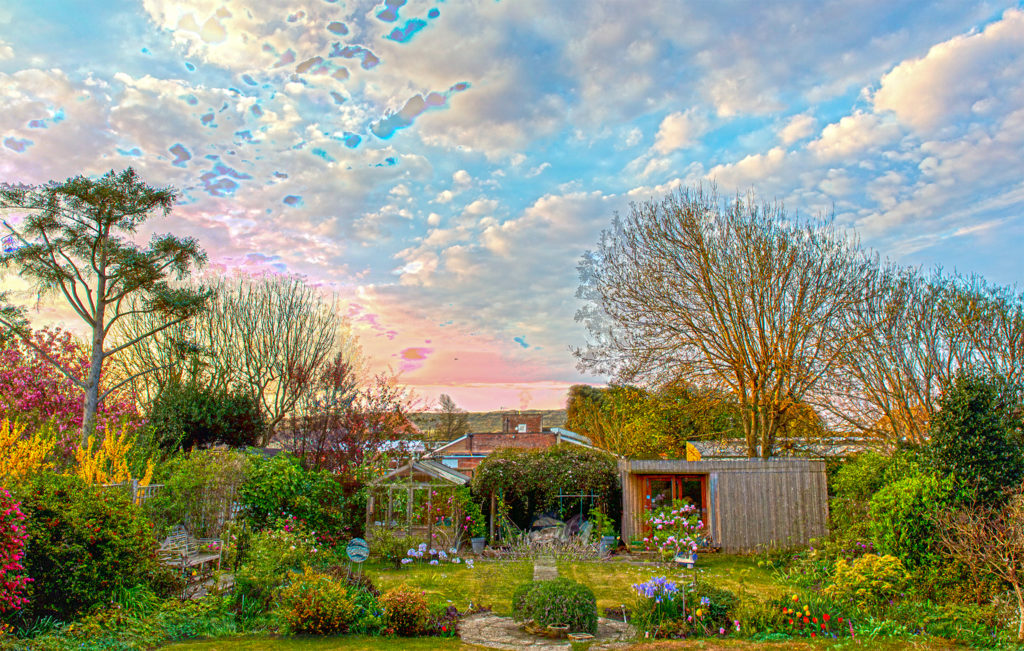 The grass has recovered from its retreat during our recent dry spell, a hot summer of course being now a harbinger of ‘climate catastrophe’. I remember hot summers as a boy, lying in pale grasses in the Hampshire countryside listening to the sound of grasshoppers, much as I have been able to enjoy in my Sussex garden this year. Of course, being somewhat elderly my listening was most recently conducted from the comfort of a garden bench. It was a pleasure walking to see the beach full of climate activists returning oil to nature by putting it all over themselves then jumping angrily on the sea trying to stop its mythical change in levels (known in some places as tides).
The grass has recovered from its retreat during our recent dry spell, a hot summer of course being now a harbinger of ‘climate catastrophe’. I remember hot summers as a boy, lying in pale grasses in the Hampshire countryside listening to the sound of grasshoppers, much as I have been able to enjoy in my Sussex garden this year. Of course, being somewhat elderly my listening was most recently conducted from the comfort of a garden bench. It was a pleasure walking to see the beach full of climate activists returning oil to nature by putting it all over themselves then jumping angrily on the sea trying to stop its mythical change in levels (known in some places as tides).
I am conscious of being part of an ageing section of the community, although involvement with other artists as in ArtWave brings contact with the enthusiasms and optimism of youth. Not that the older community aren’t active – in fact they provide much of the glue that holds our community together. They also have a capacity to surprise. In conversation, an ageing sidesman at the church observed he didn’t think a Russian tank would last long against his 25pounder anti-tank gun (he wears his medal on his surplice). Having morning coffee in a nearby sunny garden with fellow bell ringers discussing my hosts latest jaunt across the 60 miles to France in his yacht’ his wife looks up as an aircraft roar sounds above us and identifies the mark of Spitfire, later pulling her aircraft identification guide up on her mobile phone to tell what model of Cessna was buzzing past. In echoes of a desperate summer years ago Spitfires and Hurricanes vie with Gatwick airliners in the airspace here. Even modern Typhoons scream past slowly being photographed in front of our white cliffs.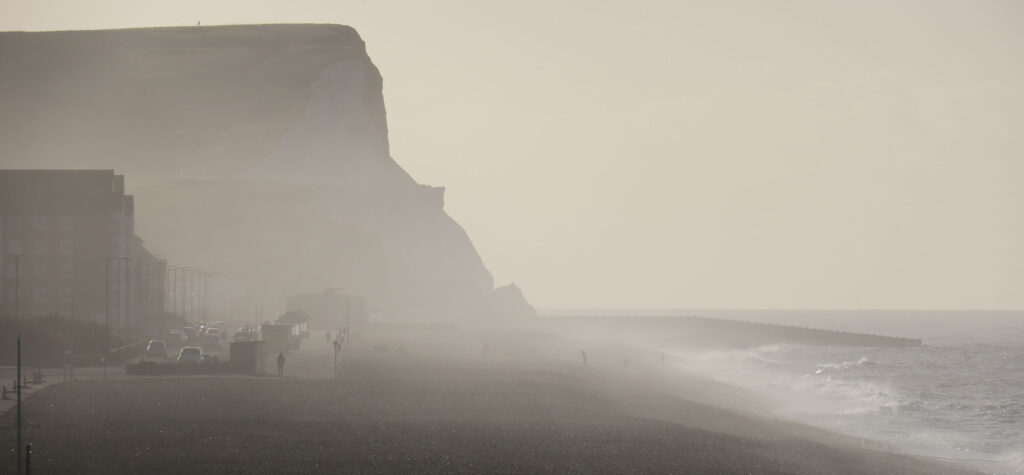
I idly wonder how the yachtsman copes with his arthritic hands as my own give me so much pain. Managing pain has become obsessive, stopping me working in the studio because of the limitations on my ability to stand in front of an easel, but my friend is determined his arthritis won’t interfere with his enjoyment of his new boat. Maybe his weekly order from the local brewery helps – he used to be a master brewer and still advises beer makers and needs his samples.
I stir myself to push the cat away, groping my way downstairs in the twilight before realising I haven’t put my glasses on. I love that sense of seeing through peripheral vision whilst dawn breaks but plod back upstairs for my ‘gig lamps’ at which point the cat follows me down for his breakfast. Taking the same photograph from the same place every day has enhanced my sense of the seasons, or the earth’s rotation and the way the light changes. I come downstairs in the dark, relying on the twilight and visual memory to supplement the use of my peripheral vision. It makes me look at things differently, to note the pattern of clouds and how colours change. Without artificial electric light I feel my vision is closer to that of artists from an earlier era. The cloudscapes here can rival anything by Constable, and I have the advantage of the camera to record their glory.
It’s not seven when I add the latest of over 2,000 images, I have put onto the BBC Weather Watchers website, knowing I will get feedback daily from our Bell Tower captain on the weather on her run the other side of Newhaven, before going to work for the NHS. An equally aged college friend in Iceland will update me on his weather, sometimes shocking with a snapshot of an erupting volcano from his kitchen window whilst ‘@glastomichelle’ will share a sunrise shot of Glastonbury Tor if it’s not raining (she makes lovely calendars from her daily photos, but I suspect is a bit of a fair-weather photographer). Technology brings more consciousness of the links between us, the weather being a common thread we share, the sense of commonality over distance and our abilities to share visions being a joyful product of 21st century technology, and many of us indulge in sharing daily
If I go into town, I always try to find a spot for free parking which usually takes me past the new gallery for Sussex prints in the street called ‘Coffin Row’ locally, its proper name being Church Lane. The town church yard is now a meter higher than the surrounding roads, due I’m told to the burials of townsfolk one on top of the other. It amuses me that there is an obelisk over the grave of the French consul who had the very English name of ‘John Bull’. Coffin Row fronts the churchyard and artists live in the flat fronted 3 storey houses facing the church. The new gallery is started as a business by another retiree and replaced another (ceramic) gallery that has promoted itself to a large shop on the main thoroughfare. Another new gallery in this ‘artist 5%’ (not enough yet to call it a quarter) was forced to close due to the COVID outbreak.
Many of us came to live here because it isn’t a resort but an historic largely unspoiled seaside town. Vicissitudes of history have given it blue plaques through the ages. Churchill visited the Canadians who had their headquarters here at the time of the Dieppe raid and the town suffered bombing from its position on the front line. One of the first railwaymen killed in WW2 was an engine driver on a steam loco going from here to Newhaven, less than 3 miles away, killed when his engine was machine gunned. Pitts house is now an Italian restaurant, and a local pub records the visit of the Duke of Wellington for a swift pint.
The rail line is now being killed off by incompetent management. Despite many of us moving here whilst continuing to run businesses in London, our commute has been destroyed by the steady reduction in services on some of the oldest rolling stock on British railways – er, shouldn’t call it ‘old’. It is apparently ‘historic’ or ‘characterful’. I suspect if the service from here to Brighton via Lewes was run by steam enthusiasts it would make huge profits but our modern railway men regard the branch line as a suitable place on which to palm off their old junk despite the tourism potentials of the walk across the white cliffs from Seaford Head via the Seven Sisters and Cuckmere Haven to Beachy Head and Eastbourne.
The town hosts the last Martello Tower built, now the town museum. The last Martello Tower in the chain protecting us from the French who now arrive just along the way in Newhaven on the regular ferry, a ferry that charmingly offers a discount to us locals if we go to the terminal and book in person. One car park is named after the capture of the French King’s belt after another of those battles where we had to smack our noisy neighbours. The ‘Buckle’ is now a free car park usually full of visitor’s cars, favoured place for fishermen to park whilst fishing for mackerel and sea bass off the beach. One an adjacent wall is a plaque noting a defeat for French invader in the 16thcentury – defeat by the local townspeople. Now our gentry try to persuade us to surrender again to the French by being submerged in the Franco-German EU.
The architecture in town is undistinguished, the oldest dating back to the 1700’s. The architecture is typically English. The replacement for the wartime bomb damage being 1950’s ugly utilitarian. The school now doubles as one of the surgeries and still retains the ugly surface bomb shelter that saved kids during WW2 bombings, hidden behind its brick walls. It is a blessing that we have nothing spectacular other than the beach and the walk as with the National Park circling the town, we are limited in what we can build and so the town doesn’t get commercially exploited.
We are as badly served by local authorities as most places in Britain. Our planning laws allow partially demolished buildings in the heart of the town to remain clad in scaffolding for years with no action being taken effectively to remove the blight. New housing fills in the bits undeveloped between the sea and the surrounding National Park, but the swelling numbers are not matched by parallel planned increases in Education, Police or Medical services. So inept are British politicians at both local and national levels, and so incompetent those who manage our public services that nothing that the rate and taxpayers pay for works or keeps pace with this expansion. New families are told the schools are full and they need to bus their kids out of town, but as on occasion all three routes out of town are blocked by accidents/fallen trees/localised flooding it is problematic for many reasons.
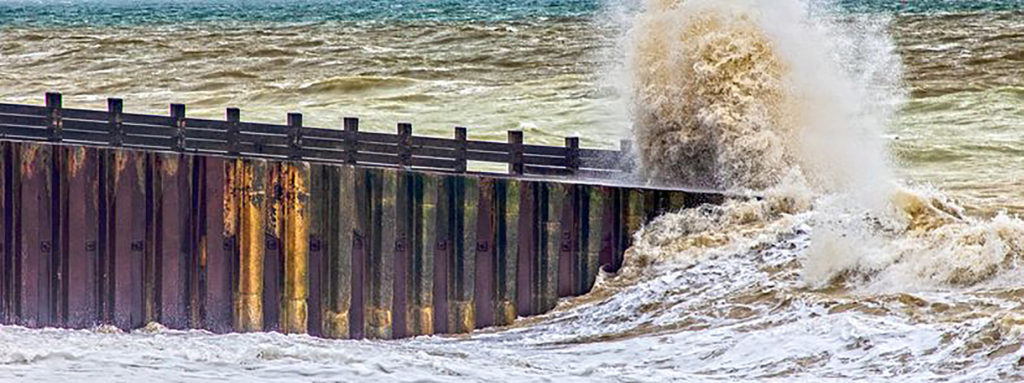 Health services have broken down, with doctors threatening to leave town and the main route for ambulance being over a broken bridge, the replacement of which has been in planning for so long that the planning process has consumed all the budget and there is no money left to build the bridge, to the delight, no doubt of the National Park Authority who like to see their concept of the locality kept unchanging, in this changing world. As for the police – the police station is unmanned and we mostly see the cops parked up on the seafront in the summer, enjoying local ice creams.
Health services have broken down, with doctors threatening to leave town and the main route for ambulance being over a broken bridge, the replacement of which has been in planning for so long that the planning process has consumed all the budget and there is no money left to build the bridge, to the delight, no doubt of the National Park Authority who like to see their concept of the locality kept unchanging, in this changing world. As for the police – the police station is unmanned and we mostly see the cops parked up on the seafront in the summer, enjoying local ice creams.
In other words, we are a typical small town. Despite all this the town was named as the second-best place to live in Britain in one of those fatuous national newspaper trivia pieces. Spitfires zoom over because the Seven Sisters are the white cliffs whereas Dover’s are besmirched by mud and grass. Our views are famous the world over, used by film companies and as bac0kgrounds to advertising but neglect is condemning them to fall into the sea (see my ‘chocolate teapots). Our shingle beach is popular because we are one of the few places on the coast that has no parking charges on the promenade. I delight in recording it with the camera. After a few years settling in by working on imagery from the garden I progressed through looking at our sea defences, and from those have sprung over 100 works on canvas and paper.
I feel settled now and my work is changing. I have started photographing the town itself, and for a while put a series of images on social media showing places I have been around the world and contrasting them with Seaford, a series labelled ‘Seaford and Not Seaford’. Now I’m looking at woodland and the Downs, (only the English would call their hills ’downs’). I am also working with images of the local harbour in Newhaven and the pollution the fishing industry generates. What I am seeing really is the beauty of life in this very English corner of the country, responding to its beauty before it vanishes as politicians and developers through ignorance or ineptitude destroy it, and growing uncomprehending largely migrant population wrecks it.
I bet ancient Brits thought that, when the Romans arrived, or some Saxons thought it seeing bloody great castles being built by Normans in Lewes, didn’t they? What is it our neighbours say? The more things change, the more they seem the same…? (In 1849, French writer Jean-Baptiste Alphonse Karr wrote, “plus ça change, plus c’est la même chose” – same thing but in French, you see) Many would like to see no change, for modernist building, social engineering, to be hidden, but the cloak of invisibility is a fantasy dream so far except for those of us who grow old and just fade quietly into the grave, such is life



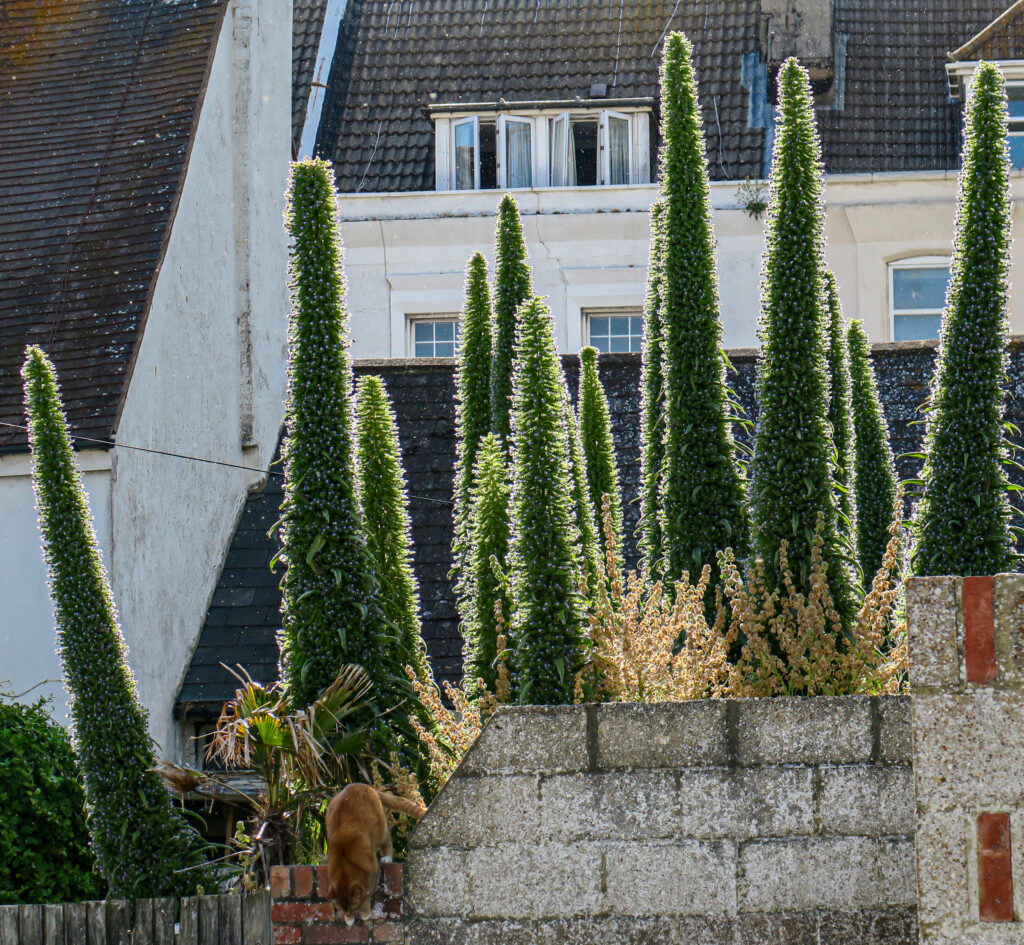
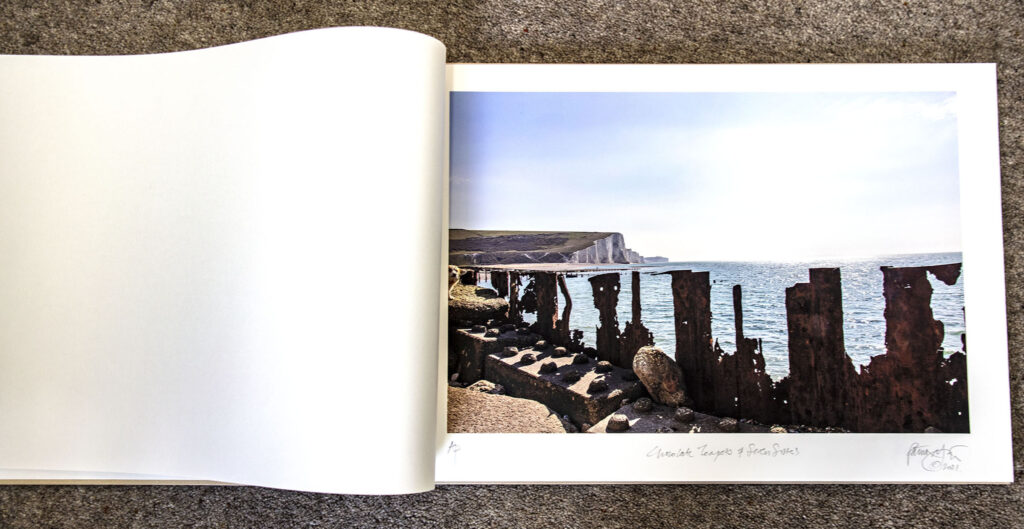
Loved it.
Well written, superbly illustrated and a future treasure for people to look back on, and weep – most likely!